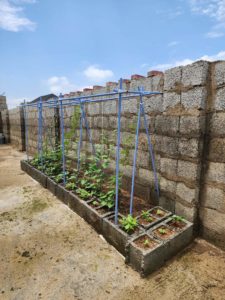Decarbonization to lower Nigeria’s electricity cost

![]()
Sopuruchi Onwuka
Adoption of renewable electricity production technology for sustainable power supply will ultimately cut the cost of electricity in Africa’s biggest economy where renewable power supply is currently unpopular due to high cost of procurement and maintenance.
Managing Director of Wärtsilä in Nigeria, Wale Yusuff, explained to industry stakeholders that ecarbonizing Nigeria could also be done in a way that lowers the cost of electricity.
He said that Nigeria could reach universal and reliable access to low-cost clean powerby adopting existing technologies for a net zero power system, including renewables, energy storage, balancing power plants, and sustainable fuels such as green hydrogen, ammonia, and methanol.
“All the technologies needed for a net zero power system in Nigeria are already a reality,” he said, adding that “smart planning, strategy and transparent government regulations will do the rest.”
Yusuff called for grid flexibility to contain system volatility as the share of renewables begins to increase in power generation with massive deployment of wind and solar expected to significantly bring down the overall system costs. He added that Wind and solar are by far the cheapest source of new electricity available.
He made it clear that flexible power capacities would be required to ensure that the supply of electricity always matches demand in recognition of the intermittent nature of wind and solar energy which are dependent on weather conditions.
Flexibility in the grid comes from balancing power technologies, namely energy storage and engine power plants, which help avoid unnecessary stress in the power system, he pointed out, adding that the country’s generation and transmission power infrastructure must also be quickly expanded and modernized to meet the explosive growth of Nigeria’s electricity demand.
“Bridging our infrastructure gap will require the union of different market forces: financing institutions both multilateral and local, government planning and private capital involvement,” said Yusuff.
Last year, Wärtsilä released a report which provides a detailed and realistic roadmap showing how Nigeria should proceed to build a 100% renewable energy power system by 2060.
The report shows that Nigeria has everything it needs to successfully accomplish its electrification goals. It benefits from fantastic solar energy resources, but it also has significant, and largely untapped gas resources.
Government has consistently stated that sas is a key transitional energy source that is set to play an important role in the country’s electrification, leading to calls for gas infrastructure to be rapidly ramped up to provide cheap domestic gas to fuel flexible engine power plants.
Wärtsilä also noted that engine power plants remain critical to the plan as the ideal foundation on which a fully carbon neutral power system can realistically be built.
“Engine power plants offer the significant advantage of being able to run on different fuels, from natural gas and heavy fuel oil today, to locally produced green hydrogen, ammonia, and methanol tomorrow as they become competitive and broadly available. In this sense, they are the ultimate “future-proof” technology, meaning they are an ideal foundation on which a fully carbon neutral power system can realistically be built. Wärtsilä’s engine power plants, on the other hand, are expected to be able to function on methanol by the end of this year, on green Ammonia next year, and on green hydrogen by 2026.
“The outlook for the use of future fuels in flexible engine power plants is indeed very positive,” Yusuff stated.




